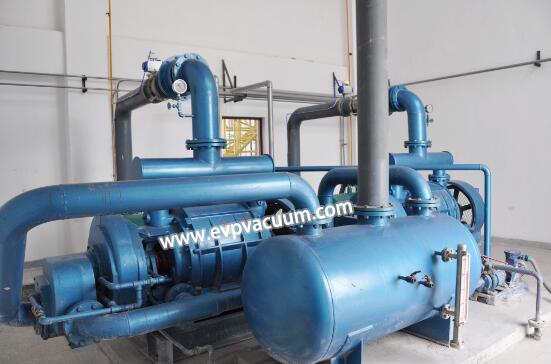What are the dangerous gases in vacuum system
In vacuum applications, in many industrial fields, such as chemical industry, electronic semiconductor industry, etc., a large number of chemically active, corrosive and abrasive gases will be removed from the vacuum system. The existence of these medium gases will require higher reliability of vacuum pump and other equipment in operation. What are the typical dangerous gases?
1. Oxygen (O2), flammable, promotes explosion.
2. Hydrogen (H2) is flammable and explosive in air, oxygen, chlorine and other gases.
3. Ammonia (NH3) is colorless and has a strong irritating smell. It is not flammable and toxic. It can burn the skin, eyes and mucous membrane of respiratory organs. If inhaled too much, it will cause lung swelling and even death.
4. Ammonium chloride (NH4Cl) is easy to agglomerate, and the aqueous solution is weak acidic. When heated, it is more acidic. It is corrosive to other ferrous metals and copper. At the same time, it has abrasiveness and can produce heavy particle pollution.
5. Hydrogen arsenide (AsH3), colorless, highly toxic and combustible, is widely used in semiconductor industry.
6. Boron trichloride (BCl3) is colorless, smoky, irritating and sour. It is harmful to people and the environment, and corrosive to the pump oil of vacuum pump and oil seal pump.
7. Boron trifluoride (BF3), a colorless toxic corrosive gas, is highly corrosive to the pump oil of vacuum pump and oil seal pump.
8. Carbon tetrachloride (CCl4), also known as R14, is nonflammable and toxic. It can produce hydrocarbon oil polymer and pollute vacuum pump oil.
9. Carbon tetrafluoride (CF4), a halogenated hydrocarbon, is colorless, odorless and nonflammable, but can form HF in plasma environment.
10. Chlorine gas (Cl2) is toxic and has strong irritating smell. It can produce hydrocarbon oil polymer and explode when mixed with hydrogen.
11. Dichlorosilane (SiH2Cl2) is colorless, flammable and toxic. It can form hydrochloric acid when meeting water.
12. Hydrogen chloride (HCl), the aqueous solution is hydrochloric acid, colorless, asphyxiating smell, nonflammable and corrosive.
13. Hydrogen fluoride (HF) is colorless, pungent and corrosive. Liquid HF is highly acidic, protonated sulfuric acid and nitric acid, easy to volatilize, heated with water to form hydrofluoric acid, which requires special attention during operation.
14. Nitrogen dioxide (NO2), a yellowish brown liquid or brownish red gas, is highly toxic and reacts with water to produce nitric acid and nitric oxide.
15. Nitrous oxide (N2O), also known as “nitrous oxide”, is a colorless and sweet gas. It is an oxidant and can support combustion.
16. Phosphine (PH3) is colorless, highly toxic, flammable, slightly soluble in water and weakly alkaline.
17. Silane (SiH4), a gas source providing silicon component, is easy to burn in air.
18. Silicon dioxide (SiO2) has strong abrasion resistance.
19. Silicon nitride (SiN4) can produce particulate pollution.
20. Silicon tetrachloride (SiCl4), a colorless transparent liquid, with slightly lower purity, is yellowish or yellowish, with suffocating smell. It is hydrolyzed into silicic acid and hydrogen chloride in humid air, and chloride can be produced in plasma.
21. Silicon tetrafluoride (SiF4), a colorless, poisonous and irritating odor gas, can be decomposed into silicon oxide in the air.
22. Trichloromethane fluoride (CCl3F), i.e. R13, is colorless liquid or gas with ether smell, which can damage water and atmosphere and produce hydrocarbon oil polymer.
These gases or reaction products are dangerous when they reach a certain concentration in the vacuum system, so special care should be taken when handling and removing them!
(The article comes from the Internet. If reprinting is not allowed, please contact our company to delete it.)

